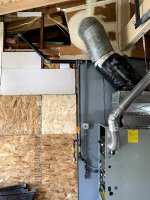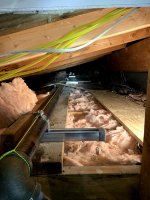Tuttles Revenge
In the Trades
- Messages
- 4,175
- Reaction score
- 1,439
- Points
- 113
I don't envy you in that installation.. We use Megapress so that would be an hour or 2 installation.
Lifting the wrenches in that position will be tough too.. make a cheater from a lenght of pipe with an elbow on the end that will go over the wrench. You might get a few degrees extra umph out of it.
Lifting the wrenches in that position will be tough too.. make a cheater from a lenght of pipe with an elbow on the end that will go over the wrench. You might get a few degrees extra umph out of it.


